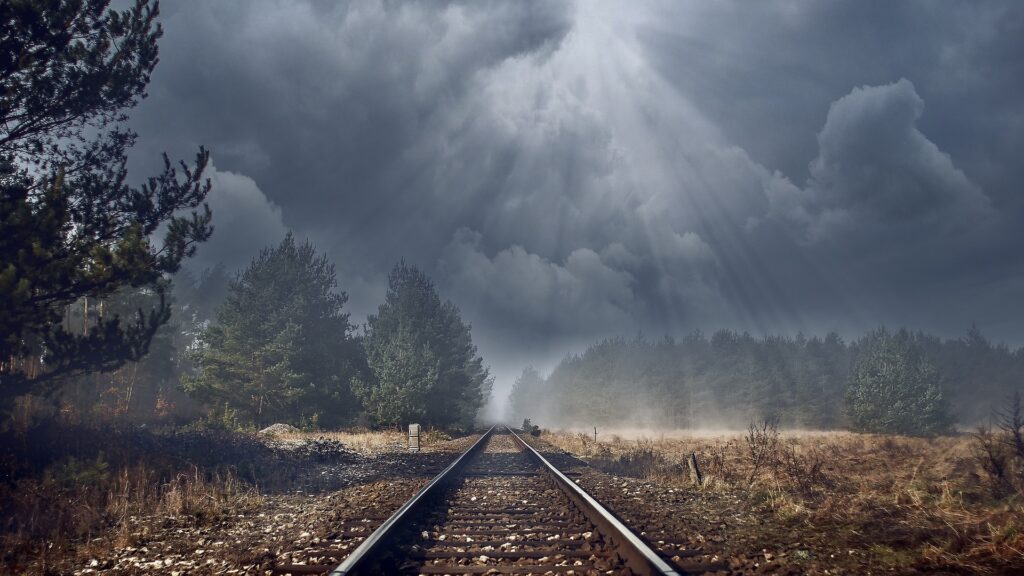On April 24, 1832, 57 Irish immigrants from the counties of Derry, Donegal and Tyrone boarded the barque John Stamp at the port of Derry to begin the eight-week sail to
Philadelphia. They had all taken different roads to arrive at this literal and emotional departure. John Ruddy was just 18 when he hugged his parents goodbye, knowing it was unlikely that he would see them again in this life. Catherine Burns was 29 and had already experienced a lifetime of sadness; she was already a widow and traveling with her Father-in-Law, hoping for a better life in America. What united them all was their desperation to leave a homeland that provided no opportunity but poverty for Irish Catholics.
After a three-month voyage, the ship sailed up the Delaware River and stopped at the first quarantine hospital in the United States, the Lazaretto. The deadly disease cholera was raging around the world. At the quarantine station, a doctor would board the ship and examine every passenger and crew member to confirm they were not ill before being cleared to enter Philadelphia; if anyone were sick, they would be quarantined. Despite these precautions, prejudice trumped science in the minds of nativist Americans, and Irish Catholics were frequently blamed for the disease when the origins were closer to home, the disease traveling from Canada down the Hudson to New York and then to Philadelphia. America gave cholera to the Irish, not the other way around.
The 57 Irish immigrants finally landed at Philadelphia’s Washington Avenue Immigration Station, where they were met by a labor contractor Phillip Duffy. To the newly arrived immigrants, Duffy, who himself had emigrated from Donegal, must have seemed the personification of the American dream they had come for. He offered them immediate employment as railroad laborers and Catherine a position as a cook and laundress to the work crew. The work was the hard, backbreaking work of helping to build one of America’s first railroads. Duffy held the contract for Mile 59 of the Philadelphia and Columbia Railroad near Malvern, Pennsylvania. It was one of the most challenging stretches of the route and offered Duffy one of the most lucrative contracts if completed. It was the backbreaking work of filling a natural valley by excavating and transporting rock and soil from an adjacent site, “the cut”; it was the work of moving a valley. It was the brutal work that only Irish Catholics, the lowest on the socioeconomic totem pole at the time, were willing to do out of financial desperation.
This arduous work was taking place in the heat of July and August. It was natural and inevitable that some of the workers would attempt to alleviate their thirst from the local streams. Soon some of the workers contracted cholera and began to die.
Panic soon gripped the area. Four nuns who were nurses from the Sisters of Charity in Philadelphia were sent to help. The locals turned on the Sisters driven by anti-Catholic sentiment and for fear they too were cholera carriers, forcing the nuns to walk back to Philadelphia. Local vigilantes descended on the camp and killed what remained of the 57 immigrants, the sick and the healthy alike, using clubs, axes, and guns. The bodies were then dumped in unmarked graves as part of the fill that trains would eventually pass over.
The American dream of the John Stamp immigrants had ended after six weeks. The railroad began an immediate coverup of the incident, burying the story as they had the bodies, and families in Ireland were left to wonder what happened to wonder what happened to the family members in America.
In 2002, two brothers, Bill and Francis Watson were going through their late grandfather’s papers. Their grandfather had been an archivist of the Pennsylvania Railroad, the successor to the Philadelphia and Columbia Railroad. Thanks to their persistence and detective work, the site of the graves of the 57 immigrants was located, and their fate properly recorded. Sadly, many of the bodies still cannot be safely recovered as they are buried near active railroad tracks.
The remains of five men were reburied in West Laurel Hill Cemetery under a memorial that records the name of all 57 immigrants and the Irish County of their birth. Young John Duddy and the widow Catherine Burns’ remains were finally buried with a dignity in Donegal and Tyrone, respectively; they had returned home after 180 years.
It can be truly said that in the case of the 57 John Stamp immigrants, America was built on their sacrifices. Sadly, there are still those who wish to keep the story of what happen at Duffy’s Cut buried, as the struggle that Irish immigrants faced is an inconvenient truth, running counter to their narrative that the Irish had it easy once they arrived in America. Their story should be told and better recognized, and their sacrifice recognized appropriately, elevating them from their current position of anonymous collateral damage to the industrial revolution.


